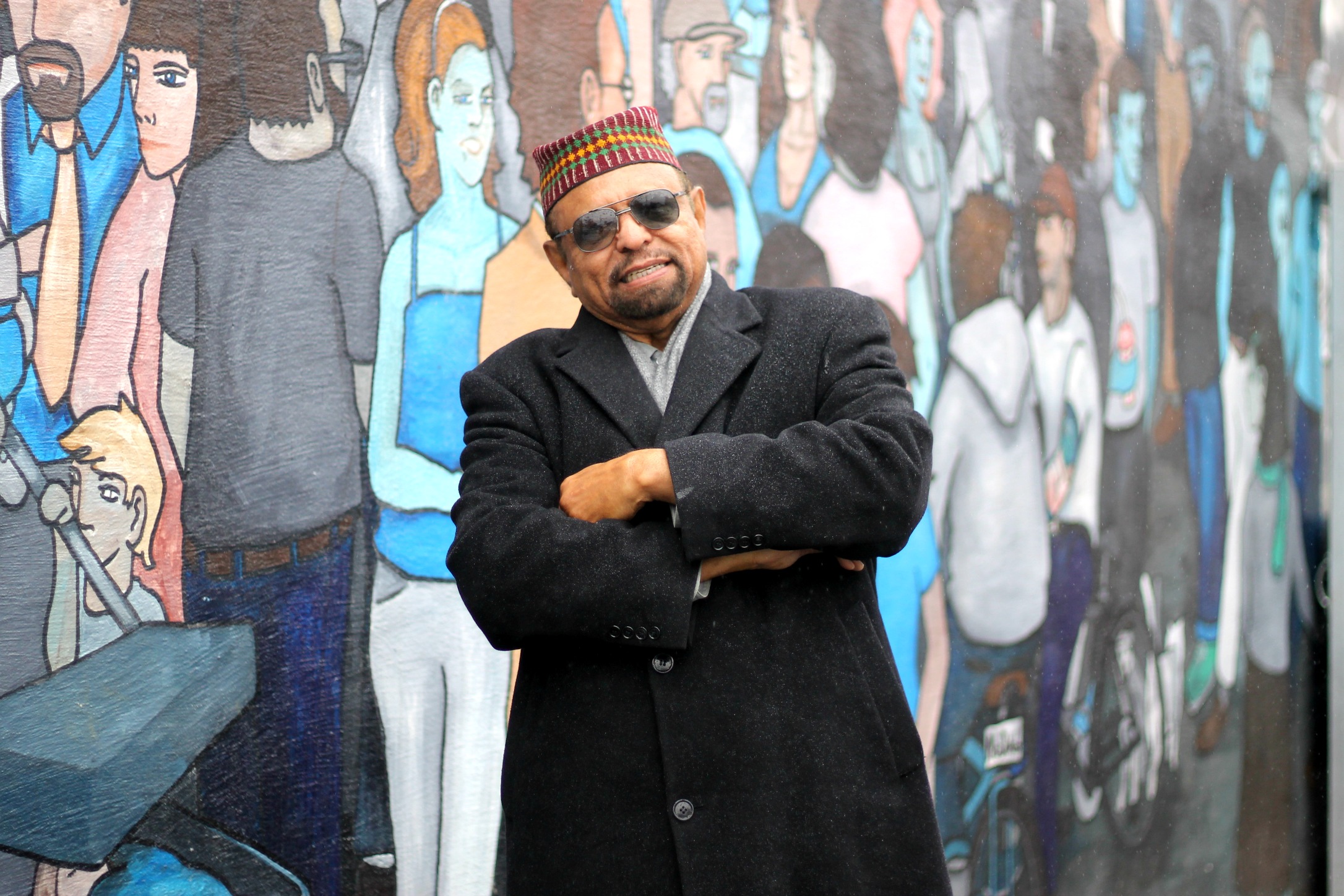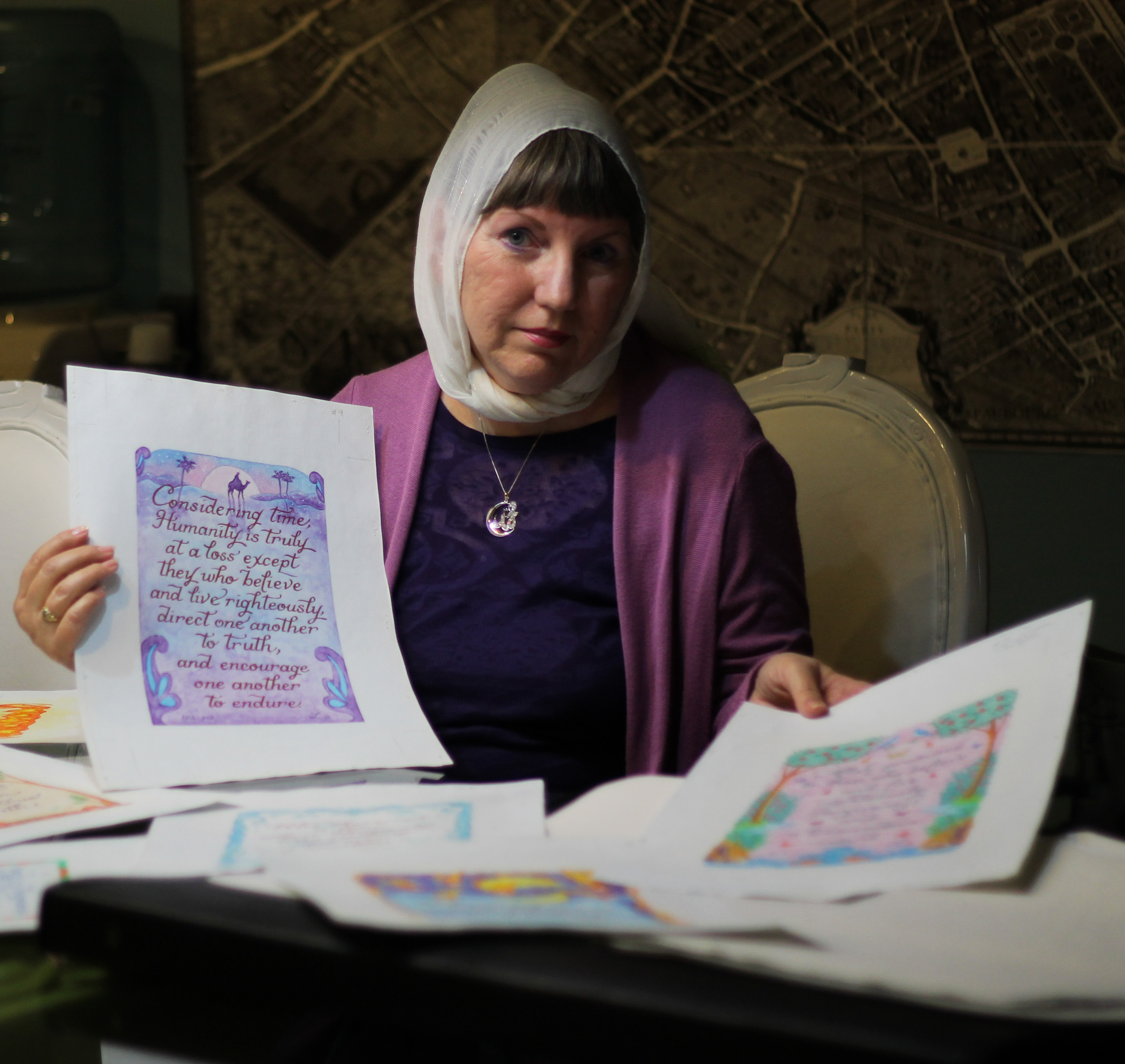The installation began simply enough last November, with little in the way of politics or public relations to worry about. “Passion in Practice” would be the exhibit’s name, a gentle survey—mainly in photographs—of how Muslims in North Carolina go about their devotions. “There are a thousand ways to kneel and kiss the ground,” as the Persian poet writes, and Aisha Anwar and Layla Quran wanted to collect a few of those kisses.
“We were very interested in how students embody Islam in their daily life,” Anwar says. “How students negotiate that conversation with a higher power—praying five times a day? Close attention to a text? It took form in a variety of ways.”

In other words, the exhibit looks beyond the five pillars of Islam to ask how Carolinian Muslims embody the discipline and selflessness that those pillars encourage—in science, in philanthropy, in dance, in private.
Both undergraduates at the University of North Carolina-Chapel Hill, Anwar and Quran set about examining the stuff of daily life: cooking, walking, studying. For the subsequent spring installation, now on view at the Carolina Union, Anwar took nearly all the photographs, a handsome selection of which offer a vivid little community of characters in the exhibition space. As Anwar puts it, she wanted to show “the invisible things Muslims do each day.”
Browsing the gallery, one can imagine Nasif Majeed, who has served four terms on the Charlotte City Council (and who flew more than 120 combat missions over Vietnam), breaking bread with Shamira Lukomwa, a Ugandan-American who has seen the terrible plight of orphans in Kampala and done something about it. Shane Atkinson converted from Baptism. Jibril Hough converted from Methodism. Anwar wears the headscarf; Quran does not. Aisha is from Pakistan, Layla from Palestine. Jenna and Furat Sawafta have contributed an impressionistic canvas of acrylic flowers in pale pastel—“Be like the flower that gives its fragrance to even the hand that crushes it,” as Imam Ali enjoins us.

Anwar’s photographs throughout are miracles of quiet perception; frequent chiaroscuro heightens her effects with notes of inner light. Her shot of Linda Barto suggests a Dutch painting from the 17th century, all brilliance and void, soulful and forlorn, holy.
But this February, before the spring installation could open, it had already become political, when Deah Shaddy Barakat was shot alongside his wife, Yusor Mohammad Abu-Salha, and her sister, Razan Mohammad Abu-Salha. Suddenly it became quite impossible to read that line about the hand crushing the flowers without the words taking on new meaning. The installation, in spite of its unassuming beauty, its groundedness in the things that make a day, had assumed the burden of cultural defense.

“We were so adamant about not trying to be defensive,” Anwar tells me over coffee in the Union, referring to the first exhibit last November. “We were going for an artful representation. That was really our only goal with the fall exhibition. We were very careful not to tie it to any media representations of Islam at all, and still we were only partially successful.”
“And then came the shooting,” Anwar continues. “And now you can’t separate it. Any depictions of Muslims right now carry that weight.”
Quran chimes in: “Muslims aren’t trying to win a public relations campaign; we’re just trying to take back a narrative in the media, and it’s a very thin line—you’ve got to play the game of being Muslims who show what Islam really is, but you’re forced automatically to the defensive. You can’t help it.”
With a rueful expression, Anwar recalls an entry in the new exhibition’s guestbook: “There’s at least one entry where a man is trying to apologize for his people—white people—trying to apologize for the actions of a murderer—so you see the writer conflating it with an entire race and taking it upon himself to apologize.”
Adds Anwar: “That’s interesting to see because we’ve been in that position for a while. It’s saddening.”
The note in question is sad indeed, though it comes from a place of warmth:
OH YOU BEAUTIFUL SOULS
I feel a responsibility, as a white man, to beg for forgiveness on behalf of my race, my religion, my culture. I’m so sorry for your loss, your family’s loss, and that hate has been perpetuated. What is it?! How can we learn to love together and love each other? May your souls find REST in Eternity and peace. May your lives guide you towards HARMONY. ❤
This apology, directed to the departed souls of three slain Muslims, is inscribed on pink paper at the front of the guest book. You can’t miss it. And however ineffectual this kind of self-flagellation-by-proxy, it attests the power of the exhibit: Without memorial, without art, there is only the dissipated luxury of forgetting. “Even the day after [the shooting] I was on campus and it was as if people were going about their lives normally,” Quran says. “It was very disturbing to me.”
Now, the multimedia installation in the Carolina Union has gracefully accepted the burden of political representation. Anwar and Quran have interpolated responses to the shootings, including images of the three victims and adding a dove that Razan herself painted in the colors of the Palestinian flag—and as I kneel to look more closely at the low-hanging bird, Anwar tells me of a video that Razan helped make last year, “Optimism is a lost sunnah.”
In the last frame of the video, Razan holds a placard with the words: There Is Hope.

“Verily With Hardship Comes Ease.” The Qu’ranic verse frames the faceless silhouettes of Deah Shaddy Barakat, Yusor Mohammad Abu-Salha, and Razan Mohammad Abu-Salha, the three Palestinian students gunned down this February. These will be the first images you see on entering the gallery.
Below these inky silhouettes hang three corresponding portraits in scratchboard, a triptych in which each family member is smiling. Silent answers in those smiles, as the faceless reclaim their features, the Holy their faith, the dead their life—in heaven, or in us.
“We’re not declaring ‘This is Islam,'” Anwar says, “but rather, ‘here is the full variety.'”
The Classroom is a regular series on the issues facing both students and teachers of higher education.





